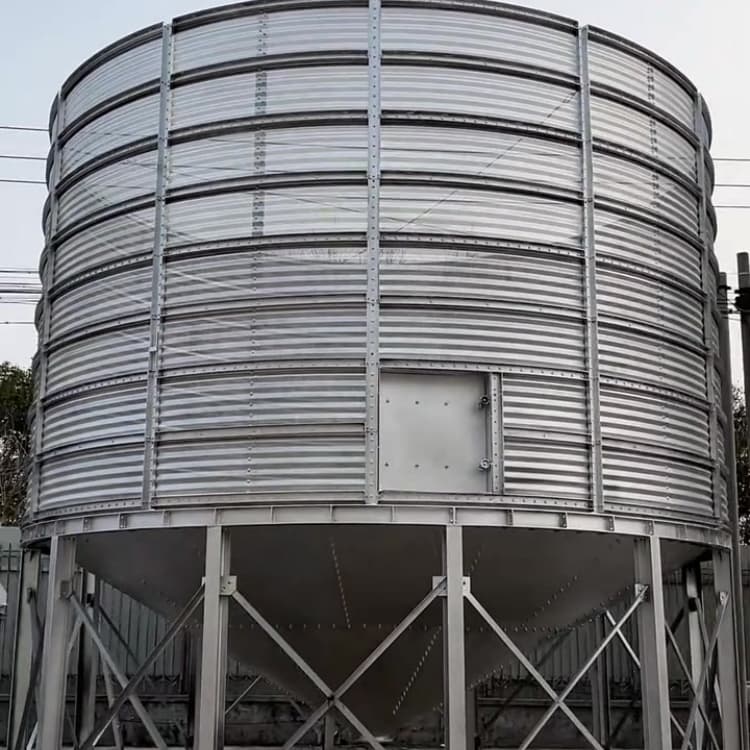Introduction
The 2023 Iowa corn spoilage incident, where 12,000 bushels were lost due to improper ventilation, underscores the critical need for effective corrugated grain bin airflow management. This guide examines ventilation failures, explains airflow dynamics in corrugated structures, and provides climate-specific solutions.
Problem: Recognizing Ventilation Failure
Case Study: Nebraska farmer reported a 7% moisture increase within 72 hours despite running fans continuously.
3 Key Symptoms of Poor Ventilation:
- Condensation on inner walls – Indicates RH% exceeding grain equilibrium moisture
- Hot spots (>5°F differential) – Visible through thermal imaging
- Musty odor development – Early mycotoxin formation sign
Farmer Insight:
“We lost $18,000 worth of soybeans before realizing the musty smell wasn’t normal” – Clayton Farms, Ohio
 Principles: Airflow in Corrugated Structures
Principles: Airflow in Corrugated Structures
Corrugation’s Impact on Airflow
- Channeling effect: 25-30% reduced CFM efficiency vs smooth-walled bins (Purdue University 2024 study)
- Optimal fan placement: Should align with corrugation valleys for laminar flow
Thermal vs Mechanical Ventilation
MethodCost ($/bushel)Moisture ReductionEnergy UseNatural (ΔT)0.020.5%/dayNoneForced (axial)0.082%/day15-20 kWh
Solutions: Climate-Adaptive Approaches
Humidity Monitoring Setup
(Illustration: 4-point RH% sensor placement – 1m above floor, two mid-bin opposing sides, peak center)
North America (Continental Climate):
- Winter: 2-hour morning ventilation when VPD >0.5 kPa
- Summer: Nocturnal cooling cycles (fan runtime ≥4hrs after sunset)
Australia (Arid/Semi-Arid):
- Install solar-powered vents for 24/7 airflow during >35°C spells
⚠️ Professional Warning:
Never enter bins during ventilation – 87% of grain entrapments occur during airflow adjustments (OSHA 2024 data)
Implementation Checklist
- Conduct pre-storage bin corrugation inspection
- Calibrate RH sensors against grain moisture meters
- Program fans using PLC controllers for ΔT-triggered operation
 Principles: Airflow in Corrugated Structures
Principles: Airflow in Corrugated Structures